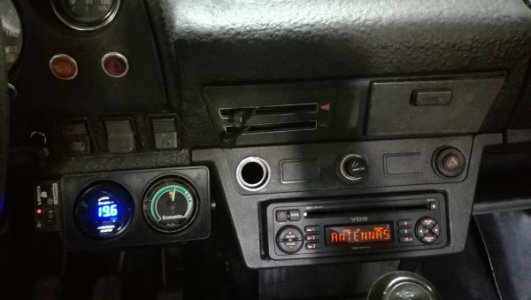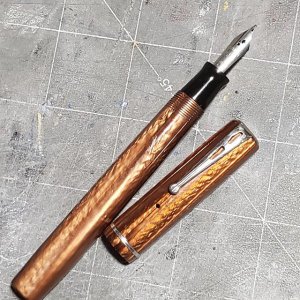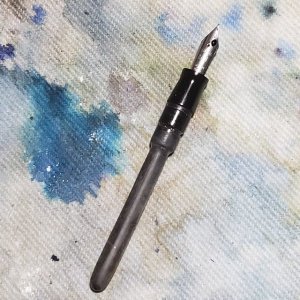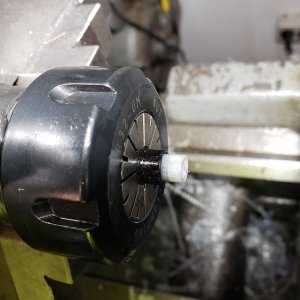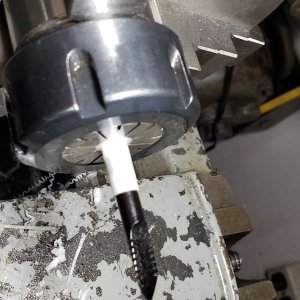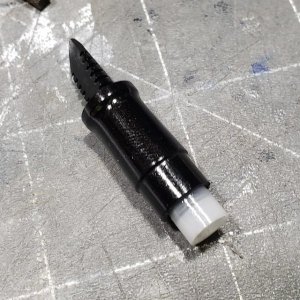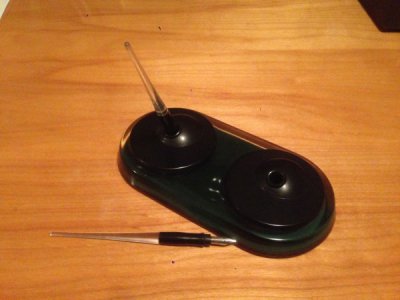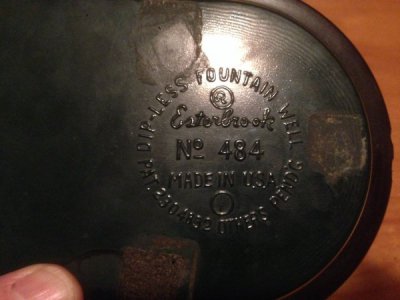This is not as photogenic or dramatic as the Niva Saga, but it was my first real project in the work for which I bought my Logan 820.
The Logan was bought last winter to up my game as a vintage fountain pen restorer. It's been a hobby for years, grew into a thriving business that I call my second job, and now I'm focusing on keeping it manageable while I spend the last couple of years in full-time executive work. I wanted to find a niche I could call my own in the already fine niche arena of vintage pen restoration. To my knowledge, although there are lathes out there, most of them are used for new pen manufacture. A few restorers have lathes, but no one in the world that I know of makes parts to sell to other restorers or the public. So, it was time to start. I got the lathe, have been climbing the learning curve, making my trials and errors and issues with the bench grinder pretty public, but today all the pieces of creating my first pen part came together.
By way of explanation, most vintage fountain pens hold their ink in latex sacs, which are glued with shellac to a part called the sac nipple, which is integral to the shaped unit that holds the nib and the feed, a ribbed piece that transports ink from the sac to the nib in very small amounts. The shaped unit is called the gripping section, because it's the part you hold to write with. Simple enough, except that vintage fountain pens had several points of potential failure, most in that gripping section. The sac nipple breaks easily, particularly in a 75+ year old pen; it's generally 40-60 thou thick and made of either celluloid, the first synthetic plastic, or ebonite, vulcanized hard rubber. Modern pens' sections, whole pens, in fact, are usually of acrylic resins, and have the same issues. The good part for me is that while lots of amateur restorers can change the sacs and make all kinds of adjustments, only a pro with a lathe can make a new sac nipple.
For context, this is my hang-around-the-desk-these-days pen, a 1940s Esterbrook, they were the pre-ballpoint Bics of them all. On the right is the pen out of its barrel and cap: latex sac glued to sac nipple, gripping section, nib. The business end of a fountain pen.
View attachment 300486View attachment 300485
So today I made my first sac nipple, of white delrin (in future I'll use black, but I wanted to see what I was doing): the feed sticking out in the middle picture is OD .227, I made the sleeve with .020 walls from a 3/8" x 2" length of delrin turned down with CCGT, and since the ID of the gripping section was around .230, had to face off the remains of the old part, then drill and bore it out to fit the .270 OD of the new sac nipple. Took me a couple of tries to get the order of operations straight, but it finally worked. This one is friction fit, future ones will have a thin epoxy layer.
View attachment 300482View attachment 300483View attachment 300484
Sac nipples are just the beginning for me, but a substantial beginning. I probably have the purchase price of the lathe here in pens waiting for them and then get sold. Gotta admit I'm pretty happy.
Thanks for reading.
Tim
